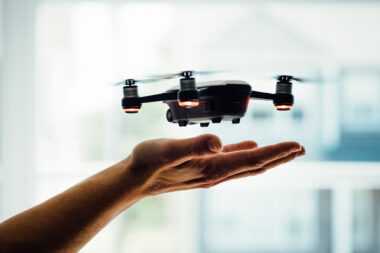Introduction:
UV-C LED disinfection technology represents a cutting edge approach in the field of sterilization and disinfection, leveraging the germicidal properties of ultraviolet light in the C spectrum (UV-C). This technology has gained significant traction due to its effectiveness in inactivating a wide range of pathogens, including bacteria, viruses, and fungi, without the use of chemicals.
Principles of UV-C LED Disinfection Technology
- Ultraviolet Light Spectrum:
- UV light is categorized into three types based on wavelength: UV-A (315–400 nm), UV-B (280–315 nm), and UV-C (100–280 nm).
- UV-C light, particularly at wavelengths around 254 nm, has been proven highly effective in destroying the DNA and RNA of microorganisms, rendering them unable to replicate and cause infection.
- LED Technology:
- Light-emitting diodes (LEDs) that emit UV-C light are used in this technology.
- Unlike traditional mercury-based UV lamps, UV-C LEDs can be turned on and off instantly, have a smaller size, a longer lifespan, and do not contain toxic mercury.
Technology used:
UV-C LED technology is a sophisticated and highly effective method for disinfection, leveraging the germicidal properties of ultraviolet light at specific wavelengths. This technology has seen rapid advancements and growing applications due to its efficiency, safety, and versatility. Here’s a detailed breakdown of the technology:
Understanding UV-C Light
- Ultraviolet Spectrum:
- Ultraviolet (UV) light is part of the electromagnetic spectrum, lying between visible light and X-rays.
- The UV spectrum is divided into UV-A, UV-B, and UV-C, based on wavelength. UV-C, with wavelengths ranging from 100 to 280 nanometers (nm), possesses the most energy among the three.
- Germicidal properties of UV-C:
- UV-C light at around 254 nm is known for its germicidal properties. It’s highly effective in breaking down the DNA or RNA of microorganisms, rendering them unable to replicate and cause disease.
UV-C LED technology
- LED Basics:
- LEDs (light-emitting diodes) are semiconductor devices that emit light when an electrical current passes through them.
- Unlike traditional light sources, LEDs do not require a filament and are more energy-efficient and durable.
- Generation of UV-C Light:
- UV-C LEDs are designed to emit light at a germicidal wavelength. This is achieved by using specific semiconductor materials, like aluminum gallium nitride (AlGaN).
- The semiconductor layers in a UV-C LED are tailored to produce light at the desired UV-C wavelength.
- Advancements in LED Technology:
- Early UV-C LEDs were less efficient and had shorter lifespans. Recent advancements have significantly improved their output, efficiency, and operational life.
- The development of deep UV LEDs, which emit at wavelengths closer to 260 nm, has further enhanced their germicidal effectiveness.
Inactivating viruses, bacteria, and fungi:
UV-C LED technology has garnered significant attention for its effectiveness in inactivating a wide range of pathogens, including bacteria, viruses, and fungi. This efficacy is rooted in the specific properties of UV-C light and the way it interacts with microbial DNA and RNA.
1. Effectiveness against Bacteria
- Mechanism: UV-C light disrupts the DNA of bacterial cells, preventing replication. When bacteria are exposed to UV-C radiation, thymine or other pyrimidine dimers in DNA are formed. These dimers prevent the bacteria from reproducing and performing vital cellular functions, leading to their inactivation.
- Scope: UV-C LEDs are effective against both Gram positive and Gram negative bacteria, including antibiotic-resistant strains. This includes bacteria like E. coli, Staphylococcus aureus (including MRSA), and Streptococcus pneumoniae.
2. Effectiveness against viruses
- Mechanism: Similar to bacteria, UV-C light impacts the nucleic acids in viruses. It causes damage to the RNA, or DNA, that makes up the viral genome. This damage inhibits the ability of the virus to infect host cells and replicate.
- Scope: UV-C LEDs have been shown to be effective against a range of enveloped and non enveloped viruses, including influenza viruses, noroviruses, and even coronaviruses. The efficacy can vary based on the structure of the virus and the dose of UV-C applied.
3. Effectiveness against Fungi
- Mechanism: Fungi, including moulds and yeast, are also susceptible to UV-C light. The radiation disrupts the DNA and cellular structures of fungal cells, leading to their inactivation.
- Scope: UV-C LEDs are effective in controlling common fungal pathogens, including those affecting agriculture and causing skin infections, such as Candida and Aspergillus species.
Factors Influencing Effectiveness
- Intensity and Wavelength: The germicidal efficacy of UV-C light depends on its intensity and wavelength, with around 254 nm often cited as the most effective. UV-C LEDs can be optimized to produce light at specific wavelengths for maximum effectiveness.
- Exposure Time: The duration of exposure to UV-C light is critical. Longer exposure times generally increase efficacy, but the ideal duration depends on the pathogen type and the intensity of the light.
- Distance from the Light Source: The effectiveness of UV-C light decreases with distance. Ensuring optimal placement of UV-C LED devices is crucial for effective disinfection.
- Pathogen Characteristics: The physical and biological characteristics of the pathogen, such as size, shape, and defence mechanisms, can affect susceptibility to UV-C light.
Design and Operation
- Optical Design:
- The optical design of UV-C LED systems is crucial for effective disinfection. This includes focusing the light to maximize intensity and coverage on the target surface or volume.
- Reflectors and lenses are often used to direct and concentrate the UV-C light.
- Thermal Management:
- UV-C LEDs generate heat, which can affect performance and longevity. Efficient thermal management systems, such as heat sinks and cooling mechanisms, are integral to maintaining LED efficiency.
- Electrical Drivers:
- LED drivers are used to provide and regulate the power supply to UV-C LEDs. The drivers ensure stable operation and can be designed to allow control over intensity and exposure time.
Safety and efficacy
- Human Safety Concerns:
- Exposure to UV-C light can be harmful to the skin and eyes. Safety measures, including proper shielding, automated shutoffs, and usage protocols, are crucial for devices utilizing UV-C LEDs.
- Material Compatibility:
- UV-C light can degrade certain materials over time. Understanding and testing material compatibility is important in environments where UV-C LED systems are used for prolonged periods.
Applications
- Surface Disinfection:
- Used in healthcare, laboratories, and public spaces for disinfecting surfaces. Portable UV-C LED devices can disinfect high-touch objects like mobile phones and doorknobs.
- Water Treatment:
- UV-C LEDs are effective for water disinfection, offering a chemical-free alternative to chlorine treatment in both large-scale water plants and portable devices.
- Air Purification:
- Integrated into HVAC systems or standalone air purifiers to reduce airborne pathogens and improve indoor air quality.
Algorithm used:
In the context of UV-C LED disinfection technology, algorithms play a vital role in optimizing the effectiveness and safety of the disinfection process. These algorithms are designed to control various parameters of the UV-C LED system, ensuring maximum efficiency while adhering to safety standards.
1. Dosage Calculation Algorithms
- Purpose: To calculate the precise dose of UV-C light required for effective disinfection. This is crucial, as insufficient dosage may not eliminate all harmful microorganisms, while excessive exposure can lead to material degradation and safety concerns.
- Functionality: These algorithms consider factors such as the intensity of the UV-C LEDs, distance from the surface or object being disinfected, exposure time, and the specific pathogens targeted. The algorithm adjusts these variables to achieve the optimal dosage.
- Implementation often involves empirical data on the resistance of various pathogens to UV-C light, enabling the algorithm to tailor the dosage for specific disinfection needs.
2. Exposure Time Control Algorithms
- Purpose: To determine the optimal exposure time for disinfection, balancing effectiveness with energy consumption and material safety.
- Functionality: Based on the calculated dosage and the intensity of the UV-C light, the algorithm determines the required exposure time. It ensures that each area receives adequate exposure to the UV-C light for effective disinfection.
- Adaptability: In dynamic environments, such as UV-C disinfection robots or conveyor systems, these algorithms adjust the exposure time in realtime based on the movement speed and distance to the target surfaces.
3. Power Management Algorithms
- Purpose: To regulate the power supplied to the UV-C LEDs, optimizing their lifespan and energy consumption.
- Functionality: These algorithms manage the current and voltage supplied to the LEDs, preventing overheating and ensuring stable operation. They adjust the power dynamically based on the required intensity and disinfection duration.
- Energy Efficiency: By optimizing power usage, these algorithms contribute to the energy efficiency of the system, reducing operational costs.
4. Safety Monitoring Algorithms
- Purpose: To ensure the safe operation of UV-C LED systems, especially in environments where human exposure is a risk.
- Functionality: Incorporates sensors to detect human presence or improper use. The algorithm can automatically shut off the UV-C light or reduce its intensity when a potential safety risk is detected.
- Integration: These algorithms are often integrated with motion sensors, cameras, or other safety mechanisms to provide real-time monitoring and response.
5. Adaptive Control Algorithms for Dynamic Environments
- Purpose: In environments where the UV-C LED system is mobile or where the conditions vary, these algorithms adapt the operation dynamically.
- Functionality: They adjust the UV-C LED output based on changing conditions, such as distance from surfaces, movement speed (in the case of robotic systems), and the type of surface being disinfected.
- Example: In a UV-C disinfection robot, the algorithm would modulate the light intensity and exposure time as the robot moves through different areas, ensuring consistent disinfection across varying distances and surfaces.
Working process:
The working process of UV-C LED disinfection technology involves several key steps and components that work together to ensure effective sterilization. This technology utilizes the germicidal effects of ultraviolet light in the C spectrum (UV-C) to inactivate microorganisms such as bacteria, viruses, and fungi.
1. Initialization and Power Supply
- System Start-up: When the UV-C LED disinfection system is activated, the initial step is to power up the LED drivers. These drivers regulate the voltage and current supplied to the UV-C LEDs.
- Power Management: Ensuring that the LEDs receive the correct power is crucial for maintaining their efficacy and longevity. Overdriving can lead to overheating and a reduced lifespan, while under driving may result in insufficient UV-C light output.
2. UV-C LED Activation
- Light Emission: Once powered, UV-C LEDs emit light in the UV-C spectrum, typically around wavelengths of 260–280 nm. This wavelength range is optimal for germicidal activity.
- Spectral Output Control: Depending on the design, the system may adjust the intensity or spectral output of the UV-C light. This can be based on the type of microorganisms being targeted or the specific disinfection requirements.
3. Disinfection Process
- Exposure to UV-C Light: The emitted UV-C light interacts with microorganisms on surfaces, in water, or in the air. The light penetrates the cells of the microorganisms.
- DNA/RNA Damage: UV-C light is absorbed by the nucleic acids within the microbial cells, causing modifications to the DNA or RNA structure. This damage inhibits the ability of the microorganisms to replicate, effectively inactivating them.
- Disinfection Time: The duration of exposure to UV-C light is critical. It depends on the intensity of the light, the distance from the light source to the target, and the type of microorganism. This time is typically controlled by the system to ensure effective disinfection while avoiding unnecessary exposure.
4. Monitoring and Safety Measures
- Sensor Integration: Many UV-C LED systems are equipped with sensors to monitor the disinfection process. These can include sensors for detecting human presence (to prevent exposure), measuring light intensity, and ensuring proper coverage.
- Automated Controls: In advanced systems, automated controls can adjust the operation based on sensor feedback. For example, if a person enters the room, the system may shut down or reduce intensity for safety.
5. Post-Disinfection and System Shutdown
- Completion of Cycle: After the predetermined exposure time or once the disinfection cycle is complete, the system will automatically shut down the UV-C LEDs.
- Cooling Down: If the system includes thermal management components, they will continue to operate as needed to cool down the LEDs and associated electronics.
- Reporting: Some systems may provide a report or indication that the disinfection cycle is complete. This can be a visual signal, an audible alert, or a digital notification in more sophisticated systems.
6. Maintenance and Calibration
- Regular Checks: Periodic maintenance is necessary to ensure the system’s efficacy. This includes checking the LEDs for performance, cleaning the protective covers or lenses, and replacing LEDs as needed.
- Calibration: In certain high-precision applications, the system may require calibration to ensure that the UV-C output remains within the desired parameters.
Case study:
Implementation of UV-C LED Technology for Hospital Disinfection
Background
Hospitals are critical environments where hygiene and sterilization are paramount to preventing the spread of infections. Traditional cleaning methods often fail to eliminate all pathogens, and the rise of drug-resistant bacteria has further complicated this challenge. A leading hospital decided to implement UV-C LED technology as an adjunct to its standard cleaning protocols to enhance disinfection effectiveness.
Objectives
- Reduce Hospital-Acquired Infections (HAIs): Lower the rate of infections acquired within the hospital, especially in high-risk areas like the Intensive Care Unit (ICU) and operating rooms.
- Improve Disinfection Efficiency: Implement a more efficient and reliable disinfection process to supplement manual cleaning.
- Enhance Patient and Staff Safety: Reduce the chemical load from traditional disinfectants and minimize the risk of exposure to pathogens.
Implementation
- Assessment and Planning:
- Conducted a thorough assessment of hospital areas that would benefit most from UV-C LED disinfection.
- Developed a detailed implementation plan, including staff training and scheduling of disinfection cycles.
- UV-C LED Technology Installation:
- Installed fixed UV-C LED units in critical areas such as operating rooms and ICUs.
- Implemented portable UV-C LED units for regular disinfection of patient rooms, waiting areas, and other common spaces.
- Integration with Existing Protocols:
- UV-C LED disinfection was scheduled after standard manual cleaning procedures to ensure comprehensive sterilization.
- Established protocols to ensure that areas were vacated during UV-C disinfection cycles for safety.
Results
- Reduction in HAIs:
- In the six months following implementation, the hospital recorded a significant reduction in HAIs, particularly in areas where UV-C LED technology was used extensively.
- The rate of infections caused by multi-drug-resistant organisms decreased notably.
- Increased Efficiency and Coverage:
- The UV-C LED systems provided consistent and thorough disinfection, covering areas that are hard to clean manually.
- The time required for disinfection processes was reduced, enhancing room turnaround times.
- Positive feedback from staff and patients:
- Hospital staff reported ease of use and expressed confidence in the improved disinfection process.
- Patient satisfaction surveys indicated appreciation for the enhanced hygiene measures.
Challenges
- Training and Adaptation: Initial training and adaptation to the new technology required time and resources.
- Cost Consideration: The initial investment in UV-C LED equipment was substantial, though offset by the expected long-term savings in infection control.
Conclusion
UV-C LED technology represents a potent tool for disinfection, capable of inactivating a broad spectrum of harmful microorganisms. Its effectiveness against bacteria, viruses, and fungi makes it a valuable asset in various settings, from healthcare and laboratory environments to public spaces and the food industry. As research continues to refine and optimize this technology, its role in maintaining hygiene and preventing the spread of infectious diseases is expected to grow significantly.



